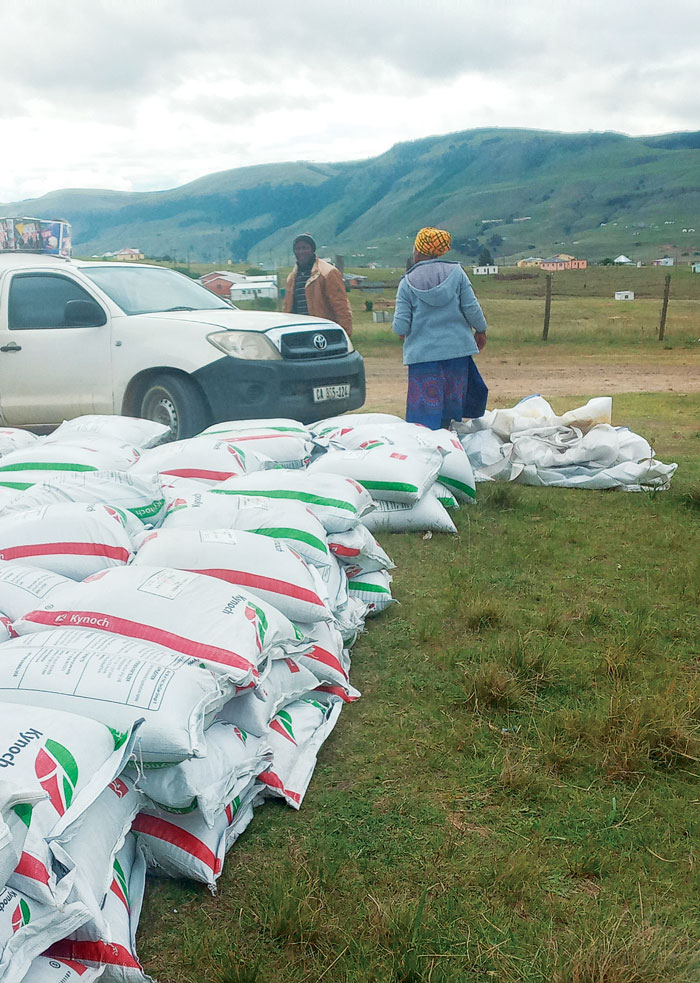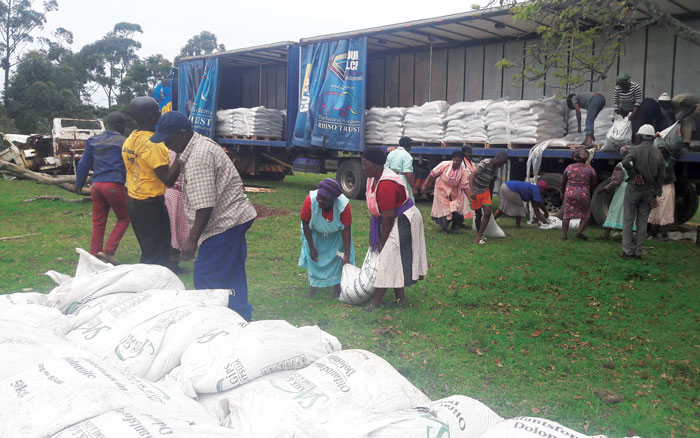September 2022
| LOUISE KUNZ, PULA IMVULA CONTRIBUTOR |
 |
With soaring fuel prices and high input costs, making plans to cut costs has become crucial. Bulk buying is one way to save, but the average person does not have extra money available to buy enough products to last a few months. Forming a ‘buying group’ to purchase the necessary inputs can be a practical solution for farmers in rural areas.
Group, bulk or collective buying refers to a buying group who purchase their seed, chemicals and fertiliser in bulk and then split the cost (and inputs) among themselves – making the unit cost lower for each product. It is especially beneficial for subsistence and smallholder farmers, particularly those in rural areas, as they won’t be able to access these terms from the suppliers if they buy individually.
A study about farmer groups and fertiliser use in rural South Africa, which was published in the South African Journal of Science in 2018 (https://www.sajs.co.za/article/view/5171), found that smallholder farmers in South Africa use less fertiliser than they should, mainly as a result of a lack of finances to purchase it. The other problem was that their land is usually far from major centres on impassable roads.
The study results suggest that farmer groups play a positive role in the use of improved agricultural inputs in South Africa, as it helps them overcome various challenges.
TEAMWORK IS CRUCIAL
Planning, teamwork and timeous payment are of importance in bulk buying. If an individual pays late or does not pay the whole amount in time, it affects the transaction and negatively impacts the rest of the team as delivery can only take place once the payment is done. Late delivery can have an impact on the planting window.
Luke Collier, regional development manager at Grain SA’s Kokstad office, believes planning and management are key in buying groups. In his area Collier does the legwork, but the farmers have to handle the rest. What has proved to be successful in the Kokstad buying groups, is that each group elects a committee with a chairperson, secretary and treasurer who handle the administration. ‘Individuals who want to be part of a buying group also need to have their own bank accounts,’ he adds.
Once the calculations are done, the individuals must pay the owed amount into the group account by a certain date. The committee then goes to the Grain SA office, where Collier verifies the payments before it is paid over to the supplier.
To function effectively, healthy relationships amongst group members are important. Unfortunately, group buying does not run smoothly in all regions. Infighting and/or mistrust among group members will result in dysfunctional groups. However, farmers who are not comfortable working with others may soon realise how beneficial the group concept can be.
‘For example, it can even help when a group of farmers approach the government together to ask for assistance with mechanisation. It they do it together, the government can help them as a group as they have the same objective,’ says Jerry Mthombothi, regional development manager at Grain SA’s Mbombela office.

MORE POSITIVES THAN NEGATIVES
The most obvious advantage of group buying is the savings, as it allows the group to purchase items in bulk at better prices, meaning all members of the group get access to these savings. ‘When buying as individuals, farmers will buy the cheaper product to save money. However, when buying together in groups, it is possible for them to buy high-quality inputs thanks to the discount given for bulk purchases,’ says Mthombothi.
Besides the discount prices, dealing with a collective of farmers makes it easier for the suppliers to offer technical support. It also reduces the cost in logistics of reaching every individual farmer to deliver the inputs, as delivery can be done to a central location where farmers can help off-load the purchases. This also promotes teamwork, says Mthombothi, who has witnessed how the farmers assist one another when deliveries are made.
It also promotes community spirit. When farmers get together to collect their inputs, they have time to discuss communal farming issues and can support each other by offering advice. Through these shared interactions, relationships are strengthened.
To Johan Kriel, Grain SA’s regional development manager in the Free State, and his son, Hannes, an area manager for a local seed company, the main advantages of buying groups are:
FACTORS THAT CAN NEGATIVELY IMPACT THE GROUP
Although group buying or buying in bulk can lead to big savings, there are certain loopholes one must try to avoid:
‘If one member does not give his full cooperation, it can put the whole group in a bad light and possibly harm the transaction,’ says Du Toit. A buying group is a matter of people scratching each other’s backs.

If everyone helps, offloading gets done quickly.
Publication: September 2022
Section: Pula/Imvula